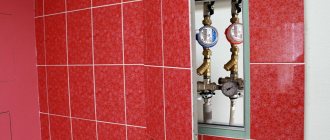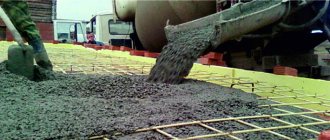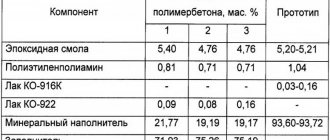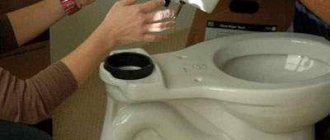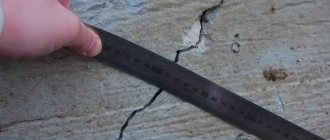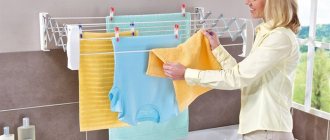What is Conductive Adhesive
Glue is a viscous substance that is used to join a variety of materials. There are many types of adhesives, each of them has its own characteristics and properties. Among the most popular are stationery (PVC for papers), linoleum (for flooring), conductive (for various electrical circuits and mechanisms).
Photo - Conductive glue.
A conductive two-component adhesive must have the following features:
- Dry quickly, this is necessary for speed of work;
- Have a knitting consistency so that parts of the pattern that do not need to be glued are not damaged during processing;
- Have high adhesion and resistance;
- If you want to use a soldering compound, then you need to choose a heat-resistant glue;
- Be safe for the environment and workers.
This substance is necessary for repairing electrical circuits (keyboards, consumer electronics), constructing various heating mechanisms, floor coverings (warm floors, tiles, glass), etc.
Photo - Elast.
You can buy conductive glue without any problems at any construction or electrical store, the average price is from 100 rubles per 25 grams. At the same time, taking into account the consumption, we see the following picture:
- For PVC coatings, the consumption is approximately 250 grams per square meter;
- Non-PVC (textiles, metal) – 400 grams.
It is much cheaper to prepare conductive glue yourself, especially since the components can be bought at any radio store. Let's look at the most popular recipes.
Qualities of electrically conductive paste
So how do you determine which glue is right for the job? A good conductive adhesive has the following qualities:
- High drying speed so that there are no pauses in work.
- High viscosity for ease of use and protection of parts of the electrical circuit that should not be exposed to glue.
- Large adhesion values.
- Heat resistance (when soldering).
- Safety for both the worker and the environment.
- Low electrical resistance, otherwise this glue will conduct current extremely poorly.
- Content of polymers in the composition.
- The glue must not be water based. Otherwise, the elements of the microcircuit may be filled with this glue and damaged, and the glue itself may take too long to dry, which will slow down the work of the master.
The glue is sold in construction or radio engineering stores at a relatively low price - only ±100 rubles for just 25 grams. Considering that the same PVC coatings require at least 250 grams of glue per square meter, and for textiles or metal even 400, the price of glue turns out to be quite high. However, the components of electrically conductive glue can be purchased at a specialized store, and it will be a big savings to make it yourself at home, and if done correctly, homemade conductive glue can serve as a more than worthy replacement for store-bought glue.
Necessary properties of electrically conductive adhesive
A mandatory element in the glue is powdered nickel or fine silver. Alternatively, crushed palladium can be used. The listed components give the composition characteristics of electrical conductivity. The higher the content of an element in a substance, the better the conductivity properties, but the strength of the connection decreases.
To impart good elasticity, without compromising other characteristics, a polymer binder is added to the adhesive composition. The component also provides reliable adhesion to the surface and reduces density. Any type of conductive adhesive must have the following properties and features:
- dry quickly after application to the surface for faster work;
- have a viscous structure so as not to damage microcircuits and other elements during use;
- have high surface adhesion and resistance;
- do not cause harm to people and the environment.
Where is it often used?
A conductive substance is indispensable when repairing radio components, electrical circuits on keyboards, household appliances, as well as in the process of constructing various heating devices and floor coverings (warm floors, tiles, glass).
Electrically conductive composition is used for soldering
This substance can be purchased ready-made at a building materials or electrical store without any problems. However, it is important to take into account the expected material consumption:
- to connect PVC coatings you will need about 250 g per square meter;
- if you have to glue textiles or metal, then the consumption will increase to 400 g per m².
Note! Electrically conductive adhesive is often used by motorists when carrying out glass repairs, as a conductive paste for sealing in the presence of a heated rear window, as well as when repairing its threads.
You might be interested in this: How to connect a voltage relay
Areas of application
Amateur radio circuits and homemade designs. In confined spaces, it is difficult to manipulate the soldering iron and solder. Some chips and other expensive electronic components are damaged when overheated. These and other practical problems are solved with the help of conductive adhesive compositions. Examples:
- fastening of piezoelements in radio equipment;
- restoration of heating “strips” on the rear window of a car, torn tracks of printed circuit boards;
- connecting miniature parts while simultaneously creating a conductor;
- reproduction of cold soldering technology.
If necessary, conductive varnish will provide protective functions. The application of such adhesive compositions is used to create “flat” heating elements of a heated floor system.
How to make conductive homemade glue
A very common method is where graphite plays a major role. You need to buy the cheapest quick-drying glue (“Moment”, “Elephant”, “Second”) or varnish. Carefully unscrew the foil from the back of the tube, do not damage the seal on the lid. Now we need a soft pencil M4 or M2. We take the lead out of the pencil, knead it thoroughly to the consistency of powder and pour it into a tube of glue. Use a long match to mix our composition and twist the foil; be sure to secure it at the bottom with pliers so that the adhesive does not leak out during operation.
How to make conductive glue with your own hands?
Below are some simple recipes for making conductive glue, gel or lubricant. There is nothing complicated in this process. The only difficulty is finding the necessary components of such glue for contacts.
Recipe one
This recipe for making conductive glue with your own hands is the simplest. For people who don’t really want to spend a lot of time making it, this method is definitely suitable. So, the conductive glue will be based on ordinary superglue in a tube. It can be purchased at many hardware stores and markets. Superglue has certain features that will ensure the creation of a conductive adhesive. Firstly, graphite powder dilutes extremely well in superglue. Secondly, it should be noted that in large volumes this glue hardens rather slowly.
As has already become clear from the above, to make conductive glue you will need graphite powder. There is no need to worry about where you can get it, since it is easy to obtain by chopping the lead of an ordinary pencil. To do this, you can use sandpaper or a file.
Manufacturing process
First of all, you must prepare the following materials:
- a tube of superglue - “Moment” or “Second” or even AI 156 brand varnish or colorless “NTs”;
- soft simple pencil (both M2 and M4 are suitable);
- pliers.
After this, we move on to making conductive glue at home. Sharpen your pencil and break off some of the lead. Mash the rod yourself on a sheet of paper to get graphite powder, as in the photo below:
Next, if you decide to make conductive varnish from superglue, carefully unfold the tube from the back side, which is tightly twisted into a tube. Now you need to pour the powder yourself through the unpacked back of the tube (the ratio should be 1 to 1 according to the recipe). To make the consistency uniform, stir it with a match or a needle. When the homemade glue is ready, wrap the tube as the manufacturer did and, to be on the safe side, tighten the twist with pliers. The tool for restoring tracks on the board is ready, you can proceed to use it.
We also recommend watching the video instructions, which show how to make conductive glue yourself using a graphite rod and AI 156 varnish:
We make varnish that conducts current
Additional Recipes
Graphite dust is not the only component that can be used to prepare conductive adhesives. There are several more complex mixtures that have better electrical conductivity or adhesive properties:
- A mixture of silver powder (130 g) and graphite (12 g) are conductive components, and the binders are nitrocellulose (8 g), acetone (50 g) and rosin (3 g). In the order listed, everything is mixed in a mortar until smooth and the glue is ready. If the glue thickens, it must be diluted with acetone. This composition is more designed as conductive - you should not expect it to hold any parts like glue.
- Graphite (30 g) and silver (70 g) powder, acetone (70 ml) and vinyl chloride-vinyl acetate (60 g) - after mixing, they become a syrupy conductive liquid with adhesive properties. Store in an airtight container to prevent the acetone from dissipating. Use it to dilute the mixture if it thickens.
- The powder from the graphite rod of the AA battery and the ceponlac are mixed until a creamy mixture is obtained.
Instructions for use
- The surfaces to be bonded are cleaned of dirt and degreased.
- The contents of the tube are stirred until a homogeneous mass is obtained.
- The product is applied to the surface.
- The position of the composition is adjusted by the blade.
- The glue will set in 20 minutes.
If Kontaktol gets on a surface that cannot be glued, the composition can be removed with acetone or ethyl alcohol. To reduce the viscosity, ethyl alcohol is also used, but not more than 20% of the total amount of solution. To reduce the resistance of the adhesive, after it has dried, the surface is rubbed with metal until the adhesive strip gives a metallic shine.
When Kontaktol is needed to repair glass heating filaments, the sequence of actions will be as follows:
- The damaged area is determined.
- The area where the thread breaks is rubbed with fine sandpaper and degreased with a solvent.
- Strips of adhesive tape or masking tape are glued above and below the thread, forming something like a stencil.
- The contents of the flask are mixed for several minutes.
- The product is evenly applied to the broken contact.
- After 30 min. the improvised stencil is removed.
- If possible, dry the glued area with a hairdryer.
- You can use heating a day after applying the glue.
Choosing glue in the store
Construction and hardware stores have a very wide selection of factory-made electrically conductive glue.
Contactol
The adhesive produced under the Kontaktol brand is an innovative development of the German manufacturer Keller. The product is intended for mounting microcircuits, repairing tracks on printed circuit boards, and eliminating defects on contacts in electrical appliances. The substance sets quickly, and after 5-7 hours absolute polymerization occurs. To speed up the hardening process, it is allowed to warm up the treatment area with warm air.
Permatex
Permatex glue (Permatex) is a two-component composition for the restoration of heating contacts. The connection made is resistant to vibration loads, not subject to ultraviolet radiation and temperature changes. It is better to work with glue at an ambient temperature of at least 10 °C.
TPK-E
TPK-E adhesive is used for gluing aluminum products, stainless steel and carbon fiber together and in various combinations. Solution treatment helps ensure electrical connection with transient resistance. Thanks to its consistency and composition, the product removes static charges from the material.
Forbo 615 eurostar lino el
Floor coverings (linoleum, carpet) are “slung” onto Forbo electrically conductive glue. This is a translucent composition without a characteristic odor.
DoneDeal
DoneDeal glue from an American manufacturer has good adhesion to most materials. The product is water resistant and suitable for repairing water transport. If the rules of use are followed, the strength of the adhesive seam exceeds the strength of the material being processed.
Homakoll
It was developed specifically for gluing floor coverings that are produced in rolls and have a fabric or fleecy backing.
- The composition contains no toxic or volatile components.
- Minimum water content.
- Does not shrink after complete drying.
- After initial adhesion to the surface, the likelihood of shifting and peeling is minimal.
- Easy to apply with a notched trowel.
- Incombustible.
Mastix
Mastix adhesive based on nickel powder. It is used for the restoration of rear window heating threads in cars, filling gaps, cracks and holes, and gluing metal. The characteristics are similar to cold welding.
It is permissible to work at low and high temperatures. The quality of the connection in both cases does not decrease.
VolgaKhimProm
Restoration and reinforcing composition. Complete hardening, depending on the thickness of the applied layer, occurs in a maximum of an hour. Used in everyday life and industry. The glue is safe, without harmful effects on human skin, respiratory tract and mucous membranes.
Other brands
- Conductive adhesive Abro Masters. Produced in the United States of America. Repairing the rear window heating filaments.
- Forbo 523 adhesive for gluing linoleum and other floor coverings. Refers to dispersion compositions, frost-resistant, odorless, does not contain solvents.
- Baku BK 426 is an electrically conductive paste for restoring traces on microcircuits.
- Astrohim. Used in repairing glass heating filaments.
- Irpol 5. Elastic composition based on polyurethane components. Bonds antistatic floor coverings.
- Elekont. Epoxy resin based adhesive. Used when repairing a car. Ineffective, sometimes the application has to be repeated.
Types of conductive glue Kontaktol
Kontaktol is an innovative product of the German chemical concern Keller, which specializes in the production of current- and heat-conducting adhesive compositions according to a patented recipe.
This brand of adhesive is intended for mounting electronic parts of microcircuits, restoring tracks on printed circuit boards, and repairing breaks in contacts.
High electrical conductivity glue is simply irreplaceable in cases where it is technically impossible to solve the problem with a soldering iron.
Today Kontaktol glue is available in three versions:
Kontaktol glue on silver is a one-component viscous-flowing current-conducting composition intended for creating electrically conductive communications on dielectric substrates (glass, textolite, etc.).
Modified resins of synthetic origin are used as a binding element; finely dispersed pure silver powder (999 standard) serves as a conductive filler. The adhesive is heat-resistant, has high covering power and excellent moisture resistance.
The specific volumetric resistance of the frozen composition is 0.01 Ohm per cubic centimeter. Kontaktol glue is available in 2 gram cones and costs about 300 rubles.
Kontaktol Radio is a fully ready-to-use one-component conductive adhesive designed for creating conductive communications on glass, plastic and other dielectric substrates.
Modified resins are used as a binder base; finely dispersed graphite powder is responsible for the conductive properties. Kontaktol Radio glue is available in miniature plastic flasks (2 grams) and costs about 150 rubles.

